1. Tools and Methods for ACE Survivors
1.1. Self-registration
1.1.1. Being able to fill in surveys for one's personal benefit
1.1.2. ACE score surveys
1.1.3. Resiliency surveys
1.1.4. Informal surveys
1.1.4.1. "What's your mood today?"
1.1.4.2. "How well did you sleep?"
1.2. Diaries
1.2.1. Being able to write and read one's own diary entries
1.3. Interventions
1.3.1. Being able to use (multimedia) interventions
1.3.2. A sort of "micro-app within the app"
1.3.2.1. Each containing a suite of materials focused on supporting/handling an experience
1.3.2.1.1. Questionnaire
1.3.2.1.2. Videos
1.3.2.1.3. Readings
1.3.3. Focused on different topics
1.3.3.1. For when you
1.3.3.1.1. Experience anxiety
1.3.3.1.2. Feel depressed
1.3.3.1.3. Are mad at yourself
1.4. Automated notifications
1.4.1. Being reminded automatically about tasks
1.4.2. "Remember to"
1.4.2.1. Write in the diary
1.4.2.2. Do something that nurtures yourself
1.4.2.2.1. Meditate
1.4.2.2.2. Take a walk
1.4.2.2.3. Reach out to friends
1.4.2.2.4. Read a book
1.4.2.2.5. Watch your favourite TV shows
1.5. Psycho-educational material
1.5.1. Being able to read and access psycho-educational material
1.5.2. Video
1.5.3. Readings
1.6. Mindfulness meditations
1.6.1. Being able to access mindfulness meditations
1.6.2. Audio
1.6.3. Video (with audio)
1.6.4. Readings
1.7. Chat
1.7.1. Being able to chat with professional and non-professional users - and bots
1.7.2. Peers
1.7.3. Professionals
1.7.4. Chat bots
1.7.4.1. (Pseudo) artificial intelligence-based chat bots that enable a chat-based interaction with automated support and registration systems
1.7.4.1.1. Facebook
1.7.4.1.2. SMS
1.7.4.1.3. Built into the app
1.8. Games
2. Tools and Methods for Professionals
2.1. Electronic versions of ACE-related questionnaires and surveys
2.1.1. Being able to screen a client or a cohort of clients for ACEs
2.1.2. Going from printing survey PDFs and filling them in by hand to being able to do so on a tablet, smartphone, or in a web-browser
2.1.3. Archiving the results electronically, allowing for aggregate historical and real-time statistics on the responses
2.1.4. Comparing results with the results of other populations, communities, regions, etc.
2.2. Scalable, semi-automated treatment regimes
2.2.1. Being able to prescribe customized versions of the app to clients
2.2.2. Easily tailoring the ACEs app specifically to the needs of the client
2.2.2.1. Relevant interventions
2.2.2.2. ACE survey intervals
2.2.3. Assistance in following up on the well-being of the client through automated reporting and highlighting of e.g. at-risk clients
2.2.4. Easily having face-time with the client by means of video conferencing through the app
3. Audiences
3.1. Professionals
3.1.1. Medical doctors
3.1.2. Therapists
3.1.3. Teachers
3.1.4. Social workers
3.1.5. Judicial system
3.1.5.1. Judges
3.1.5.2. Police
3.1.6. Prison system
3.2. Caregivers
3.2.1. Family members/relatives
3.2.2. Friends
3.2.3. Colleagues
3.3. People suffering from ACEs
3.3.1. Adults
3.3.2. Teenagers
3.3.3. Kids
3.4. Animals
4. Statistics
4.1. Background
4.1.1. Having access to better statistics on the prevalence of ACEs - and the effect that various treatments have - could improve trauma-informed care on a nation-wide basis
4.1.2. Using technology to screen for ACEs and to collect data on the types of interventions people receive and whether and how they get better would make this kind of data science possible and fairly trivial (correlation, not causation)
4.1.3. Privacy issues are very important to take into account
4.2. Examples of statistics
4.2.1. Current and historic ACE scores for
4.2.1.1. A local community
4.2.1.2. A county
4.2.1.3. A region
4.2.1.4. A state
4.2.1.5. Nation-wide
4.2.2. Comparisons of ACE scores across communities, locations, and across various other parameters
4.2.3. Insight into what treatments indicate which effects across various parameters

